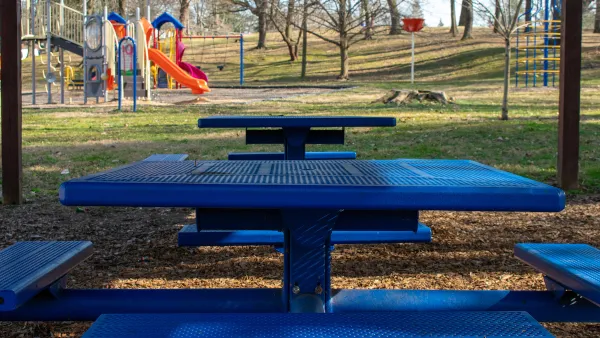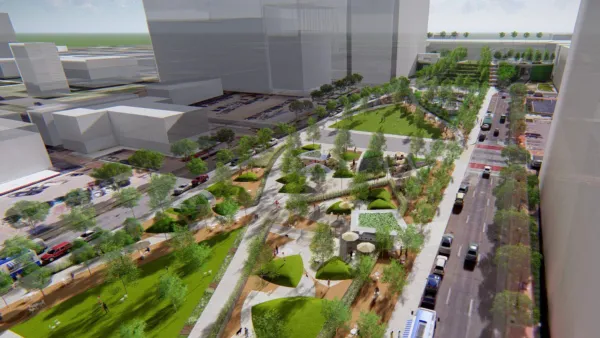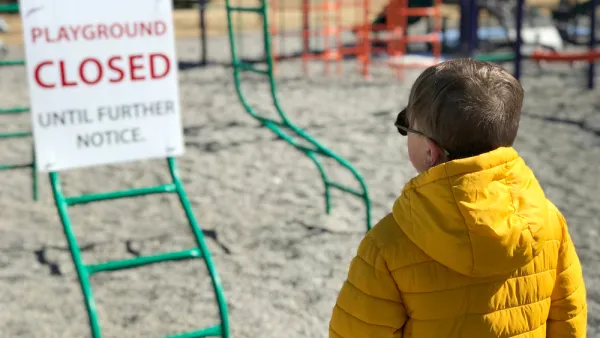A new study analyzing the amenities in 165 parks in the four-county Kansas City metro region found that low-income neighborhoods suffer from a lack of play spaces, despite having more parks per capita, reports Emily Badger.

"Low-income, minority neighborhoods in cities are often heavily disinvested places, with less money spent there on road repair, civic infrastructure or cultural projects than in other parts of town," notes Badger. "This pattern, it appears, may even extend to public parks, with the result that the children who need exercise the most may be less enticed to get it."
According to Badger, the recent study, published in the journal Annals of Behavioral Medicine, found that parks located in low-income areas of the Kansas City metro region "were less likely to have aesthetic features like decorative landscaping, trails and playgrounds." What are the implications of this inequity?
As the authors explain:
These findings are problematic because playgrounds have been shown to promote increased [physical activity] intensity and healthier weight status among children. Areas of low [socioeconomic status] are perhaps the neighborhoods that need playgrounds the most due to the increased likelihood of those areas having a higher prevalence of youth who are overweight or obese.
FULL STORY: The Inequality of Playgrounds

National Parks Layoffs Will Cause Communities to Lose Billions
Thousands of essential park workers were laid off this week, just before the busy spring break season.

Retro-silient?: America’s First “Eco-burb,” The Woodlands Turns 50
A master-planned community north of Houston offers lessons on green infrastructure and resilient design, but falls short of its founder’s lofty affordability and walkability goals.

Delivering for America Plan Will Downgrade Mail Service in at Least 49.5 Percent of Zip Codes
Republican and Democrat lawmakers criticize the plan for its disproportionate negative impact on rural communities.

Test News Post 1
This is a summary

Test News Headline 46
Test for the image on the front page.

Balancing Bombs and Butterflies: How the National Guard Protects a Rare Species
The National Guard at Fort Indiantown Gap uses GIS technology and land management strategies to balance military training with conservation efforts, ensuring the survival of the rare eastern regal fritillary butterfly.
Urban Design for Planners 1: Software Tools
This six-course series explores essential urban design concepts using open source software and equips planners with the tools they need to participate fully in the urban design process.
Planning for Universal Design
Learn the tools for implementing Universal Design in planning regulations.
EMC Planning Group, Inc.
Planetizen
Planetizen
Mpact (formerly Rail~Volution)
Great Falls Development Authority, Inc.
HUDs Office of Policy Development and Research
NYU Wagner Graduate School of Public Service





























